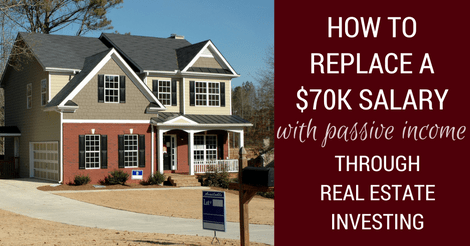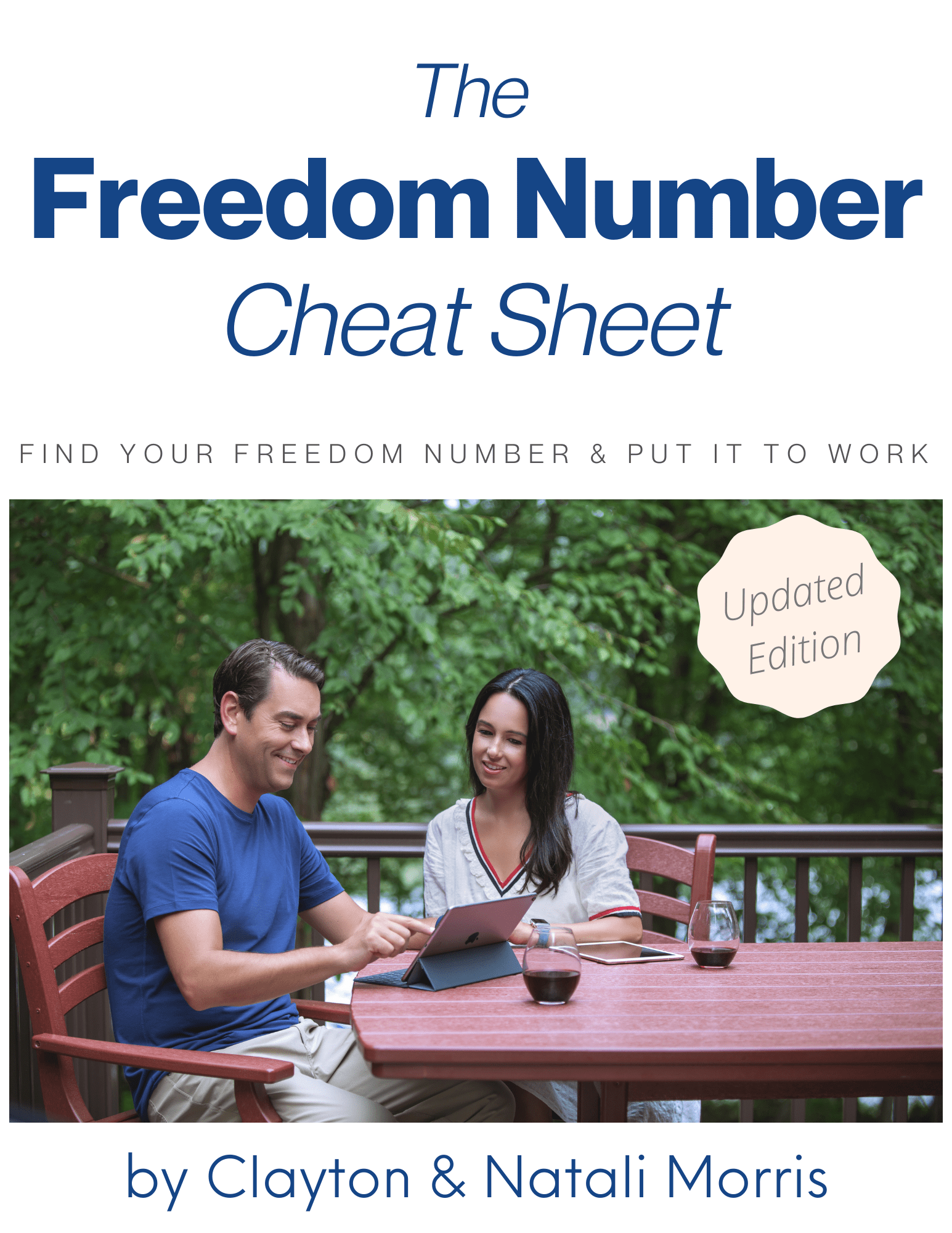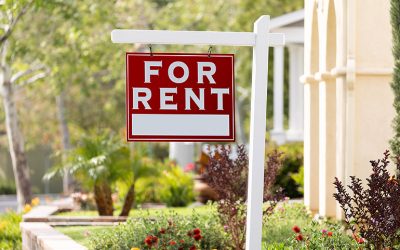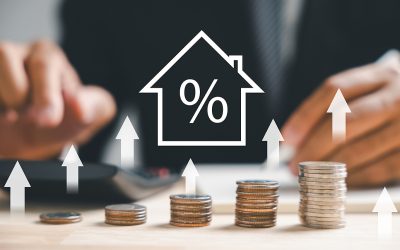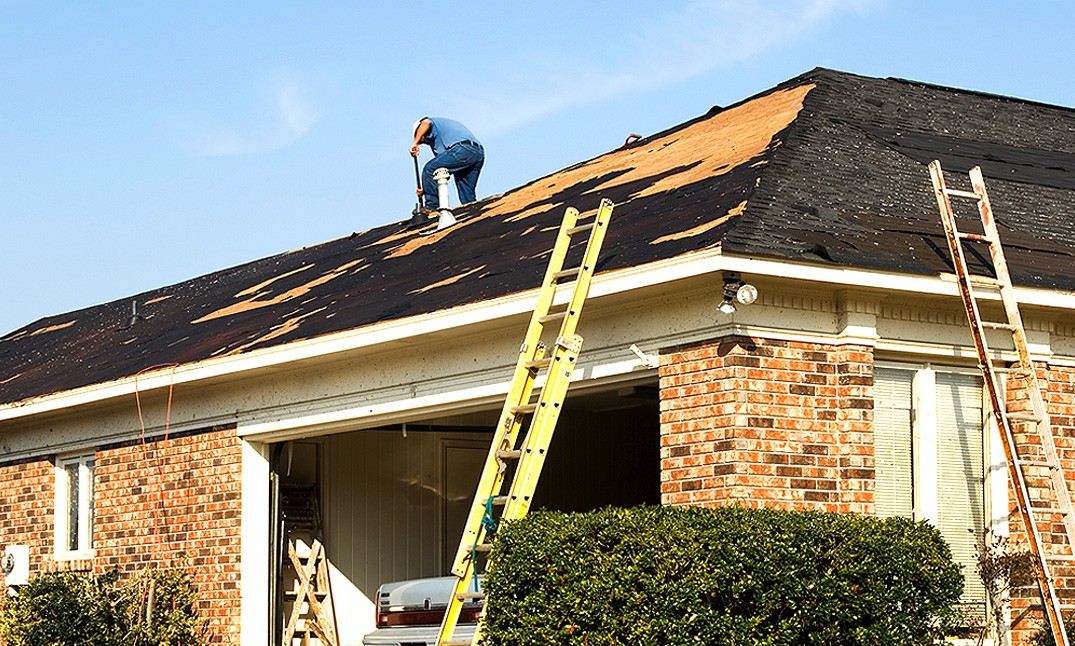
Due to the downward economic trend that we’re experiencing, along with inflation and the current affordable housing crisis, seasoned property investors are reevaluating their strategies and laying all their options out on the table to determine the best path to take moving forward. Among the strategies being assessed by them is the BRRRR Method for real estate investing.
Whether you’re an experienced property investor who has put the BRRRR Strategy to good use in the past, or you’re an accomplished real estate professional that’s utilized other methods, this article will assist you in making an informed and intelligent decision as to whether or not you should continue to use, or start using the BRRRR Method to grow your portfolio at this time.
The BRRRR Strategy – Definition & Full Overview
Although some of you may already be familiar with this real estate investing strategy, continue reading because this will be a great refresher course for you that also covers new information pertaining to today’s economy. With that said, let’s get started:
What is the BRRRR Method?
The BRRRR Method is a real estate investing strategy that stands for “Buy, Rehab, Rent, Refinance, Repeat.” The idea is to purchase a property, fix it up, rent it out, and then use the money from the refinancing to buy another property. The cycle is then repeated until the investor has grown a large portfolio of rental properties.
A Closer Look at What the Acronym BRRRR Represents
Let’s break down each letter in detail so you have a complete understanding of each step of the process and how it all comes together:
B (Buy) – Purchase a Below the Market Value Property
The investor begins the BRRRR Strategy by purchasing a property. However, it shouldn’t just be any piece of real estate – for the strategy to make sense financially, the property must be below market value, preferably by 20%.
Properties sold at lower prices are typically distressed or unwanted for one reason or another – and this is what makes them a prime candidate for the BRRRR Method. Purchasing the property below the current market price, and then raising the value through the rehabbing process helps ensure the investor will get their money back during the refinancing part of the process.
When it comes to the “buying” stage, you may already have some good techniques in place for finding lower-cost properties. However, if you want to compare your process to others, take a moment to read through this article I wrote on the topic – How to Find BRRRR Properties: A Guide For Real Estate Investors.
Once you locate and purchase the property, it’s time to move on to the rehab portion of the BRRRR Method.
R (Rehab) – Repair & Upgrade Only the Essentials
The second step is responsible for pushing the property up in value, and this is the whole point of the BRRRR Strategy. You take a distressed property and rehab it back into shape so when you refinance it, you’re making your money back. To do this successfully, you’ll need to ensure that you don’t go overboard with the repairs and upgrades – just stick to the essentials. This would include such things as the main mechanics of the property such as the windows, plumbing, roof, electric, and of course, giving it the standard curb appeal with a nice paint job, and so on.
When an investor gets caught up in the rehabbing and spends money on non-essential elements, like installing real granite countertops, they risk missing the boat in regards to coming out on top financially, and will therefore be unable to complete the final steps of the BRRRR process. However, if you only focus on the necessary repairs and upgrades, you’ll be just fine – here’s a relevant article I created that shares my tips on what upgrades make sense.
Also, keep in mind that these repairs are tax-deductible – I recommend diving into this book on the topic of taxes that helped me out significantly, even as a seasoned investor. It’s called Tax-Free Wealth, and you can pick it up on Amazon.
R (Rent) – Secure Monthly Cash Flow and Look Good in the Eyes of the Bank with a Reliable Tenant
So, you bought your property, and it’s been successfully rehabbed. Now it’s time to rent it out. Getting a reliable tenant into your property will start the cash flow process and will have your rental looking very promising to a loan officer when it comes time to refinance it, which takes us to the next step in the BRRRR Method.
R (Refinance) – Taking Advantage of the Power of Real Estate Leverage
This part of the BRRRR Strategy relies on the power of leverage through refinancing, something that is made possible when the property’s value rises during the rehabbing stage. Banks will normally refinance 75% or 80% of a property, which can provide the investor with what he or she will need to buy the next property. To explain further, take the following example into consideration:
Using the BRRRR Method, a real estate investor proceeds to buy a piece of property that’s below the market value for a total of $100,000. To do this, they need to make a down payment of 20%, which would be $20,000, and acquire a bank loan for $80,000, which is the remaining cost of the property. The investor buys the property and then performs $10,000 in repairs. So, with the $20,000 down payment and the $10,000 in repairs, they invested $30,000 of their own money.
Now that the property is rent-ready, a tenant moves in, and after there’s steady cash flow for about six months, the investor moves to the next step and approaches a bank to refinance. Because the house was rehabbed, the property’s value increased and is appraised at $150,000. The investor is then approved for a loan that’s 75% of the appraised amount of $150,000, which comes to $112,500. This money is used to pay off the original loan of $80,000, with $32,500 left, and this remaining amount is then utilized during the Repeat stage of the BRRRR process.
R (Repeat) – Start the BRRRR Method Over Again
We’ve covered the first four steps – BRRR real estate, and now it’s time to dive into the fifth, which is to repeat the whole process. This entails buying another property with the money that’s remaining from the previous refinanced property, as explained in the above example. So, as you can see, after one round of the BRRRR Method is completed, you no longer have to use your own money for a down payment on an additional property.
This enables investors to keep repeating the process until they have the desired number of rental properties that meets their investing goals. If you’re not 100 percent sure how many properties you should continue to buy, I have a free cheat sheet you can utilize to help calculate the number of rental properties you would need to become financially independent.
Before we jump into the pros and cons, here’s an excellent overview of the BRRRR Method that I put together that I think you will find interesting:
Pros & Cons of BRRRR Real Estate Investing
When reevaluating your investing strategies to include or exclude the BRRRR Method, it’s important to assess the pros and cons, especially as they apply to the current housing market. With that said, let’s go over, in detail, the main advantages and disadvantages:
BRRRR Strategy Pros
Those who are familiar with the BRRRR real estate technique know that it can provide investors with some incredible advantages such as creating passive income, the ability to use leverage, equity building, and more – let’s go over these in detail:
1. Enables Investors to Create True Passive Income Streams
High-end investors are aware of the fact that they can generate income through rental real estate without having to actively manage the property. With that in mind, the BRRRR real estate strategy was designed with the end goal of owning multiple rental properties, and when this is achieved, a great deal of passive income can effortlessly flow in like clockwork every month. This makes the Buy, Rehab, Rent, Refinance, and Repeat process well worth adding to your real estate investing plan.
2. The BRRRR Investment Strategy Helps Quickly Build Equity on Multiple Properties
When you own multiple properties that were bought through this method, you not only reel in multiple streams of passive income, but you’re also building equity. In fact, you gain a burst of instant equity for each property, and this is brought about by the rehabbing process, and then you enjoy a gradual increase of equity as the years go on. Equity is great, but it’s fantastic when you own several rental properties, which the BRRRR Method makes possible.
3. It’s a Concept that Allows Investors to Brilliantly Harness the Power of Real Estate Leverage
The whole point of running through the BRRRR process is that, in the end, you’re able to buy an additional rental property without having to use your own money. The refinance stage of this strategy provides the funds to buy the next BRRRR property, and it’s the perfect example of smart leveraging, allowing the investor to quickly build their real estate portfolio.
BRRRR Strategy Cons
This method of real estate investing has become popular in recent years, but there are some new, as well as previous disadvantages to this approach that investors should be aware of. Let’s take a look at some of the biggest drawbacks of using this process so you can determine if this strategy is currently right for you and your financial goals.
1. The Affordable Housing Crisis is Making it Difficult to Utilize the BRRRR Method
With the housing crisis, inflation, and the overall state of the economy, the bottom line is that we’re left with high housing prices and a low inventory. So, what does this mean for BRRRR real estate investors? That at this present time, it can be very difficult to even locate an available property, or one that is reasonably priced so that it fits well into the BRRRR model. On top of that, if you do find a piece of property you think will work well, you’ll most likely deal with bidding wars with other like-minded real estate investors.
Because of this, a lot of investors are finding that when they run a property through the BRRRR process, their profit margin is not what it used to be, presenting the risk of not having the funds to purchase the next rental property. Also, keep in mind that inflation has caused rehabbing material costs to rise, as well as increased fees when hiring contractors, and this has created a situation where profits are being cut even further.
This “con” was not previously on my list, but it’s unavoidable at this point, and one of the biggest factors that has made it difficult for many investors to continue to profit from the BRRRR Method.
2. The Rental Property is Unexpectedly Appraised at a Much Lower Price
It’s not unusual for property investors to lose money when an appraisal turns out to be much lower than anticipated, and this is especially concerning when you have spent the time and money working your way through all of the steps of the BRRRR real estate process. This can happen to even the most experienced investors, and when it does, the 5th step of the process comes to a halt.
This unexpected low appraisal can happen when the investor miscalculates the area housing market, as well as other miscalculations. Or, at no fault to the investor, the appraiser comes up with a lower value based on their own calculations. No matter what the reason is for the lower than expected appraisal, it can be financially devastating because it means there may be no funds to purchase the next property.
3. Rehabbing Costs are Over Budget Leaving Little Funds for the Down Payment of the Next Rental Property
As an experienced investor, I’m sure you’re familiar with the fact that no matter how well you plan, sometimes rehabbing projects can go over budget. This can stem from unexpected problems with the property, or contractors drop the ball and cost you more money, as well as unforeseen issues with the city. The bottom line is that any unexpected rehabbing cost will cut into your profits, which can prevent you from continuing to the next step.
Is the BRRRR Method In Line with Your Financial & Investing Goals at this Present Time?
Now that you’ve had a chance to review the advantages and disadvantages of the BRRRR process, you most likely have a better idea if this strategy is a good fit for your particular situation.
For those who feel the BRRRR real estate strategy still flows with their investment plans, keep moving forward with utilizing it – after all, it’s been in use for years and put into action by many seasoned investors with much success.
If you’ve come to realize that the BRRRR Method is not currently the right option for you, there are alternatives. However, keep in mind that even though this strategy may not meet your investing goals at the moment, you can always revert back to using this method when the housing market has settled down.
Keep Moving Forward Because There’s Currently a High Demand for Rental Properties
If the affordable housing crisis has made you feel that the Buy, Rehab, Rent, Refinance, and Repeat technique doesn’t make sense for you at this time – maybe because it’s too difficult to find properties that fit the usual BRRRR pricing model, don’t let that stop you from continuing to invest in real estate.
Why should you march on? Because although the current market conditions have had a negative impact on the real estate industry in certain ways, it’s also caused some positive outcomes, such as a high demand for rental real estate.
As of last month, the U.S. rental vacancy rate was actually 5.6%, not leaving many rental properties available for the tenants that are looking for a place to call home. This means that any rental put out on the market can be easily rented, and at a lucrative price per month. In addition to this, with rentals being scooped up out from under us, many investors are turning to new construction properties as a solution.
You can find out more about this rise in demand for rental properties by watching my video below – feel free to fast forward past the pre-show to 12 minutes into the video to go directly to the topic at hand.
Investors Who Can’t Locate Profitable Properties are Building Them Instead
Because of the limited availability of existing properties, as well as the higher prices we’re seeing, there’s been a new construction property boom. This makes sense because investors want to keep their foot in the game, but if they can’t find real estate to make that happen, then they’re making it happen with build-to-rent new construction properties. I recently wrote a detailed article on this topic; feel free to dive in – Rental Real Estate Trends – Increased Demand & New Construction Property Boom.
Advantages of New Construction Rental Properties
Opting for a build-to-rent piece of real estate is also an attractive option due to the fact that new properties are more appealing to lenders, as well as to buyers. This can be a huge advantage because if an investor ever wants to sell a property, a buyer will be more likely to jump in on a recently built property sale, as compared to buying an old home that may come with issues.
18%-20% Minimum Return
Build-to-rent real estate typically has an internal rate of return of around 8% when an investor is taking care of all the details themselves. However, this rate of return can be much higher when investors buy a new construction property working with a full-service real estate company such as Morris Invest. Because we’re able to offer built-in financing, among other things, we can provide investors with an 18%-20% minimum return.
Substantial Tax Advantages
Another benefit of build-to-rent properties is that they’re eligible for large tax savings through a new construction cost segregation study. Even the most experienced investors may not be familiar with this topic, so I’ll provide a quick overview because this is an important element in regards to maximizing profits.
A cost segregation study is a comprehensive analysis of a property’s non-structural components (driveway, cabinets, plumbing, windows, etc.), that’s conducted for the purpose of removing these elements out of the tax classification that depreciates them over the entire lifetime of the property (27.5 years), and instead places them into accelerated timeframes of 5, 7, and 15 years.
This allows the investor to save thousands of dollars in the early stages of the property, increasing their cash flow immediately. You can learn more about how a cost segregation works, and view examples of the tax savings you might expect by reading this article I put together – The Power of a New Construction Cost Segregation Study.
Will You Use the BRRRR Method to Invest in Rental Real Estate?
There’s no doubt that the BRRRR real estate technique is a great way to build a rental property portfolio; you just have to decide if the current state of the housing market and the economy make it a good fit for you at this time, or if it’s a strategy that you come back to at a later date. No matter what you decide, remember that rental properties are in very high demand by tenants right now, so keep moving forward with investing in this sector, whether it’s with the BRRRR Strategy or a build-to-rent property.
If you have inquiries about new construction rental properties, please feel free to schedule a complimentary call; we would be happy to answer your questions.
Before you go, grab a cup of coffee, sit back, and watch the video below that touches on why I switched from rehabbing older pieces of real estate to leaning heavily on new construction properties:
Ready To Build Passive Income Through Rental Real Estate?
Ready to talk about your goals? We're here to show you the tools and teach you the process to begin earning legacy wealth for you and your family.

